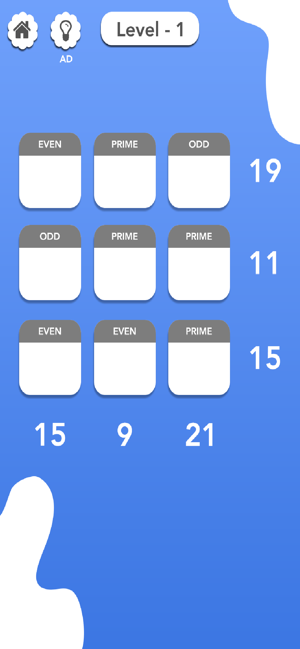價格:免費
更新日期:2020-03-04
檔案大小:97.2 MB
目前版本:1.1
版本需求:系統需求:iOS 9.0 或以後版本。相容裝置:iPhone、iPad、iPod touch。
支援語言:英語

How to play Mathematical Mini Sudoku?
It is very easy. Click on the cells to enter a number. You are only allowed to use numbers from 1 to 9, one for each cell. Any other character will be automatically deleted.
Once you have filled the 9 cells you can click on the Check button that is under the Mini Sudoku grid. This button is used for checking the solution and will show a message whether it is correct or not.
All the numbers will always be logically deducible. It is advisable to write notes down to help you find the solution easily. However, if you are able to solve the puzzle without using pencil and paper it would be better than good!
How to solve Mathematical Mini Sudoku?
Given that all the cells in Mini Sudoku are blank from the beginning, with no helping numbers, the only option to solve it is to consider the possible numbers or candidates that may go into each cell. Then all the rows and columns should be analyses taking into account the sums. After that, the numbers that do not match should be rejected until finding the suitable ones.
The possible candidates according to the hint given in each cell and considering the explanation in the section "About Mathematical Mini Sudoku" go as follows:

For cells with prime number: 1. 2, 3, 5 and 7 (the only prime numbers between 1 and 9).
For cells with even number: 4, 6 and 8 (number 2 is rejected because it is prime).
For cells with odd number: 1 and 9 (numbers 3, 5 and 7 are odd but they are also prime. Remember that being prime is a priority so prime numbers will never go in a box indicating even or odd).
That being said, it is deduced that:
Cells with odd numbers will be the ones with less candidates: only two. Therefore, these numbers can be found faster and more easily than the rest.
Since odd candidates are only two, there would only be two cells for odd numbers in each Mini Sudoku. This means that if you find one of the numbers you will also find the other one by elimination. For example, if you know that number 1 is the only candidate that matches in a cell, number 9 must go in the other and vice versa.
The next step would be analysing rows and columns whose sum has the lowest value since there will be statistically less possible combinations of three numbers that equal that value. Therefore, it will be easier to find or to reject some of them.
Then add up all the candidates in each row and column to see whether the result matches or not.
Thanks and we always love you.
